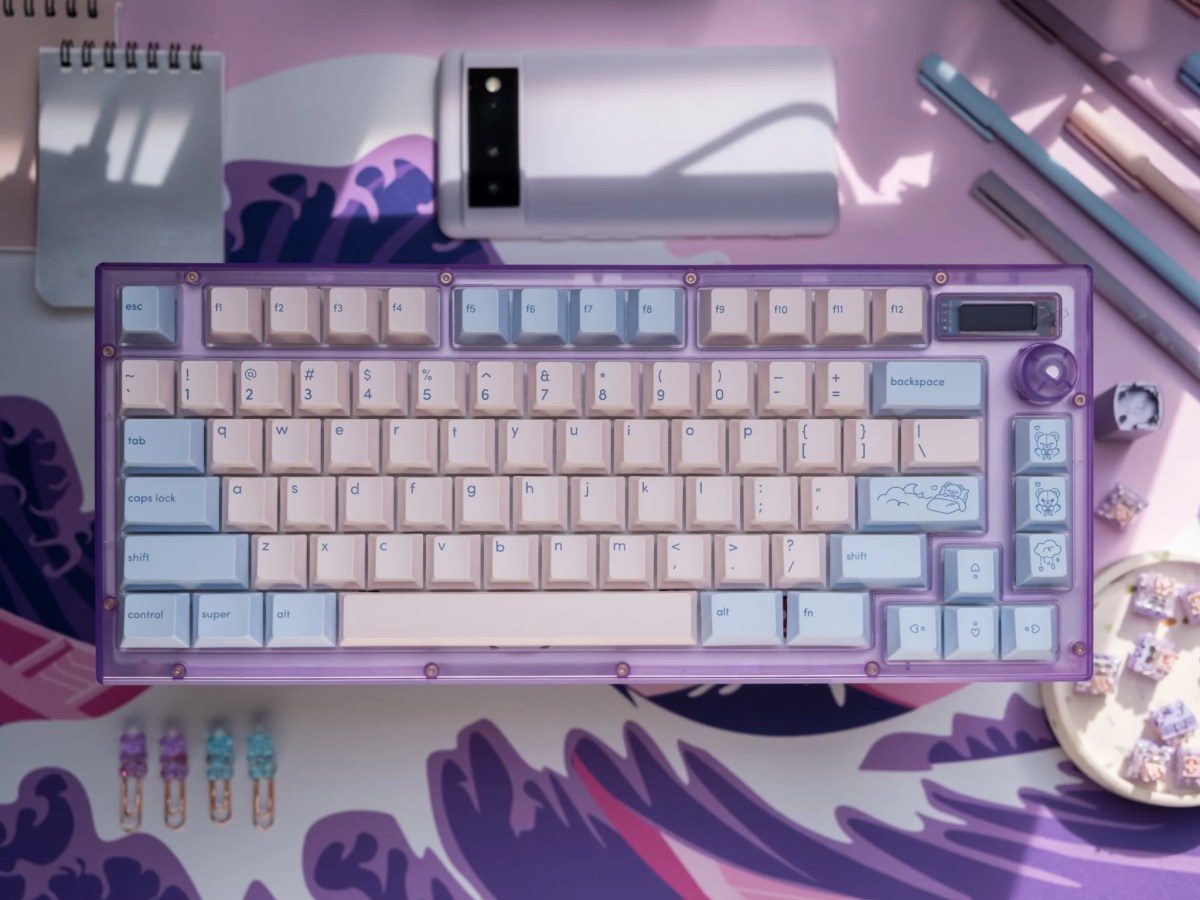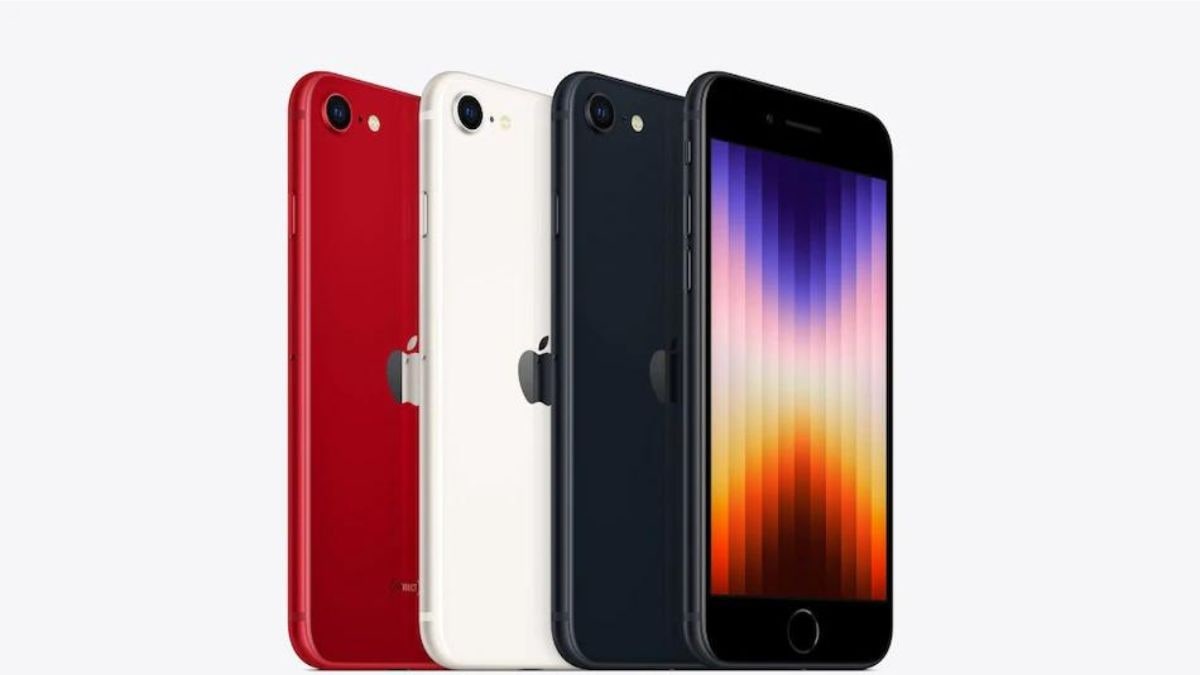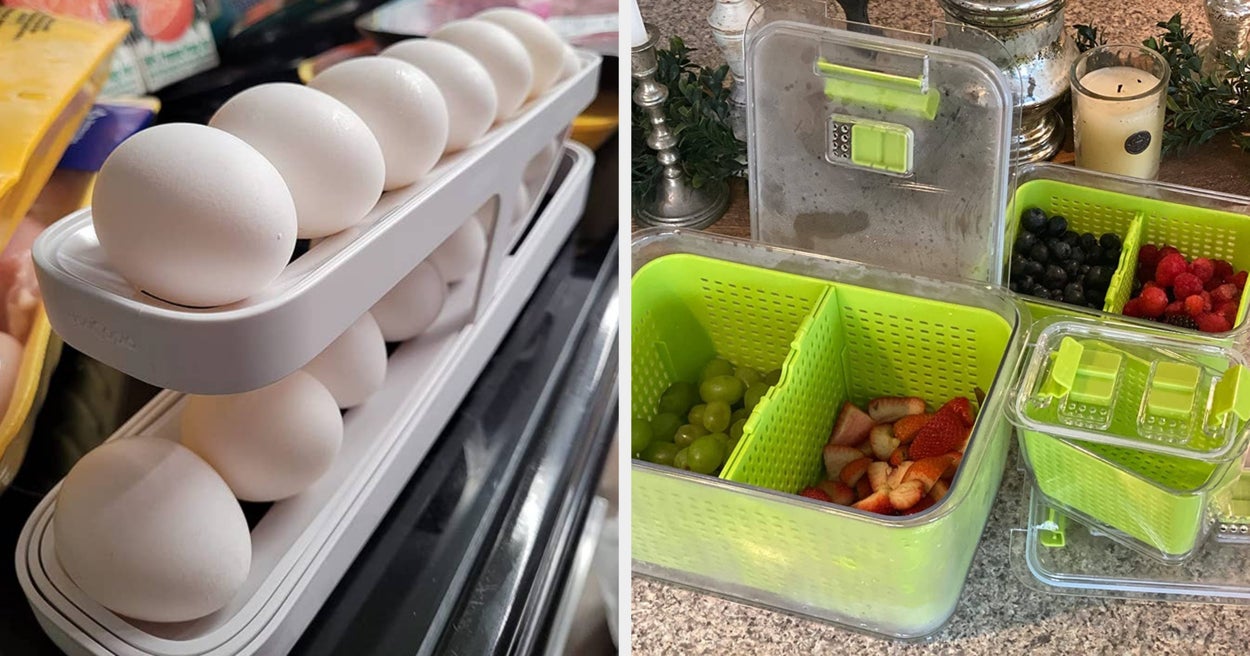Right before the mechanical keyboard hobby exploded during the pandemic, Andrew Kannan launched the Satisfaction 75 while still working as an engineer at Klaviyo. Though it took a little while for the first production run of 200 units to sell out, the Satisfaction has become somewhat of a classic. Since then, Kannan co-founded CannonKeys together with his wife, Ana Clara Oliveira, expanded the company into a full-scale custom mechanical keyboard shop and launched quite a few more successful keyboard designs of its own.
On Thursday, CannonKeys is launching a new take on the original Satisfaction 75, opening up preorders for the Sat75 X. It adds a number of modern conveniences to the original 75% design (like a hot-swap PCB, a gasket mount and pre-soldered knob) and then puts those into an injection-molded polycarbonate body.
There are three colors to choose from for now: cloud white, octo purple and stratus gray, with the last two being translucent. Most importantly, though, there’s a small LCD screen that features Bongo Cat and that counts the words per minute you write. What more could you ask for?
At a price of $111 for the board, this is a fun and easy way to get into building a custom mechanical keyboard without breaking the bank. You’ll still need switches and keycaps, but at least for the time being, CannonKeys offers a complete set with PBT keycaps and an 80-pack of linear or tactile switches for a total of $150. As is often the case with new keyboards, it’ll be a little while before these ship, with preorders expected to arrive in early 2025.
Back in 2019, the original Satisfaction started at $400; CannonKeys is obviously trying to reach a very different market with this new release.
“When we started CannonKeys, it wasn’t meant to be a full-time job or grow to where it is today,” Kannan told me when I asked him about the origins of the company. “It was really just that I made these keyboards, and I wanted to sell them and share them with others — and it seemed that there were a lot of other people who are interested in them. So it grew some legs from there, and then, before you know it, we had employees and we had a team.”
It was actually the disaster that was Apple’s butterfly keyboards on its MacBook laptops that got him to look at other options, including ortholinear keyboards. So he built his own from the ground up. As it turns out, that wasn’t the right style for him. “But at that point, the maker bug had hit,” he said. “I had seen that it’s possible. You can get this thing done. There’s people who will help you. And that’s when I was like, well, if I don’t like ortho, let me try to make something that I will like. … The Satisfaction 75 was actually also the first keyboard I ever designed full-on with a case and everything.”
At first, the couple ran CannonKeys out of their apartment in Providence, Rhode Island, all while Oliveira was simultaneously working on her doctorate at Brown. CannonKeys hired its first employee in 2021, and after first storing much of its inventory in what was sometimes more than half a dozen rented U-Haul containers, the company now operates out of a small warehouse.
With the Sat75 X, CannonKeys is, in some ways, reacting to a changing market. Not too long ago, there weren’t a lot of options for someone who wanted to build a custom mechanical keyboard on a budget — say under $150. There were some classics, like the Tofu and CannonKeys itself offered the Bakeneko at that price range, but choices were limited.
“You would have things at that lower price point — like zero to $150 — and then you would have things at $400 plus, and that middle ground was missing,” Kannan said. That vacuum was quickly filled but some of the larger, more vertically integrated companies like Keychron and Akko, for example. “Now there’s way more consumer choice, and I think that’s a great thing for the hobby as a whole, and it’s good for our business as well.”
But, Kannon noted, that also means there’s no point for CannonKeys to just follow other companies like Meletrix, which makes the popular Zoom keyboards that retail for around $200 to $250.
“We’ve always wanted to make things that resonate with people and are interesting and unique. But I think now, in today’s market, that’s even more important,” he said. “The whole idea behind Sat75 X was it needs to be more approachable.”
And I think CannonKeys succeeded there. The price point is nothing if not aggressive, especially for a small company. CannonKeys provided me with a pre-production sample of the stratus gray version of the Sat75 X, as well as a set of its NicePBT keycaps and Keygeek linear switches.
The whole point of a custom mechanical keyboard is, well, that you get to customize it. CannonKeys sent along plate foam and a silicon plate, which, together with the large silicone dampener at the bottom of the case, made for quite a nice sound signature that was neither too muted nor too high-pitched. CannonKeys also plans to sell FR4, aluminum and clear PC plates and additional gaskets.
Obviously, a plastic case on a $111 board is never going to feel as premium as a metal one that’s large and heavy with extra weights that retails for $500+. But it doesn’t feel cheap, either. I think the large silicone dampener really helps there, but for builders who like a louder, more clacky sound, removing that will definitely help them shape the board to their preferences (as well as choosing a different plate).
The way I built it, the board ended up feeling quite stiff, which may not be to everyone’s liking. I think it would be easy enough to bring back some of the flex by choosing a different build, though I don’t think the way the PCB was built (which it shares with the more premium Satisfaction 75) is set up to ever give you the most cushioned typing feel.
At this price point, there are a few trade-offs as well. There is no wireless option, for example, and no LEDs to light up your keyboard. If those things are important to you, this simply isn’t the keyboard for you.
As somebody who tends to travel with an external keyboard, I can see myself packing this one going forward. It’s light, very pleasant to type on and not too loud.
At the end of the day, building the Sat75 X was also a good reminder of how much fun it can be to build a keyboard from the ground again. A lot of the boards I’ve tested recently were pre-builds, and while I do tend to mod them and try different switches, for example, it’s not quite the same as building something from the ground up (having said that, I love that this is a hot-swap board, because having to solder every switch just sounds tedious).
In today’s world, there aren’t a lot of day-to-day objects that we get to build and modify ourselves (outside of the occasional IKEA bookshelf). There’s nothing extremely difficult about building a custom mechanical keyboard, but it is quite satisfying.










